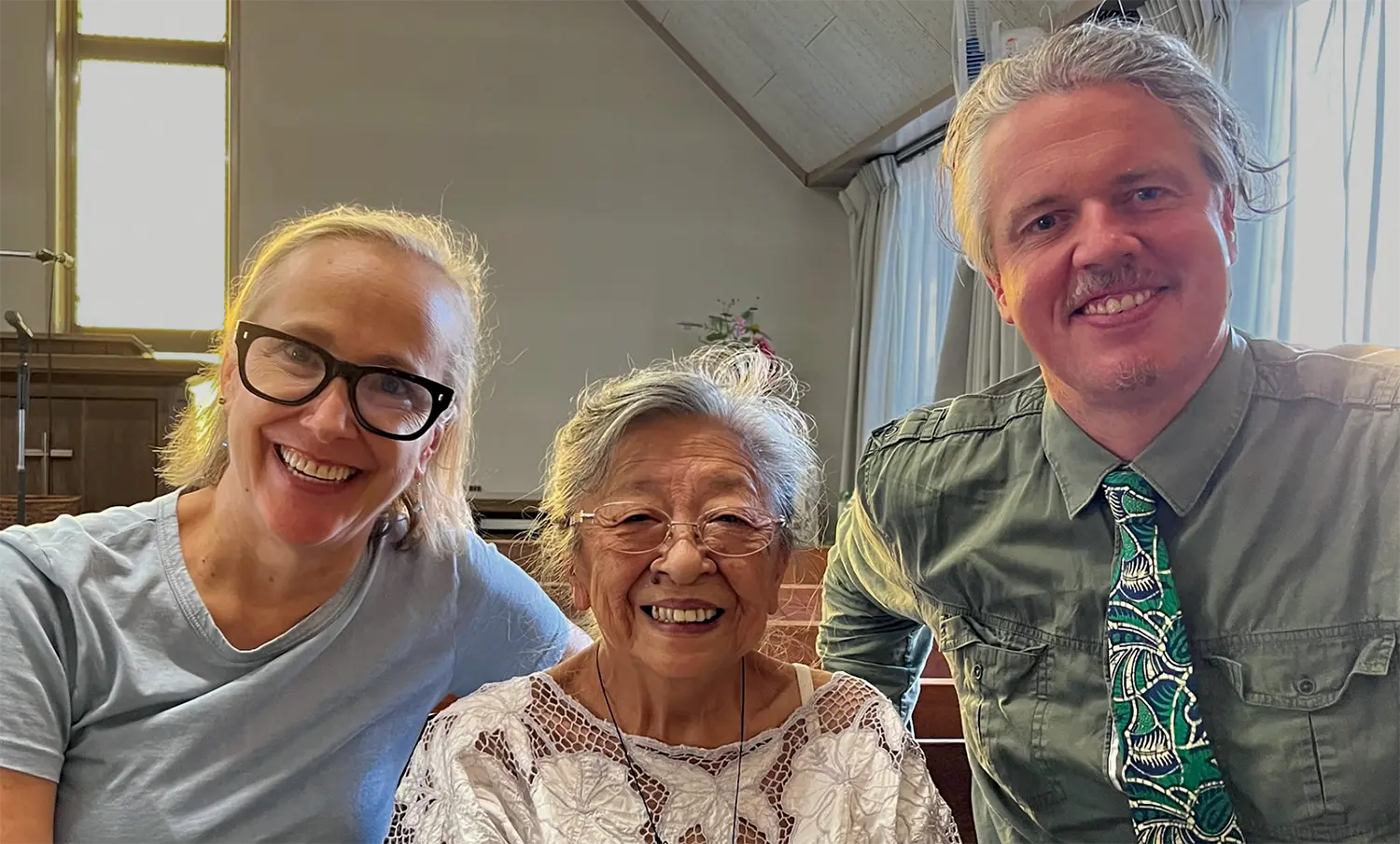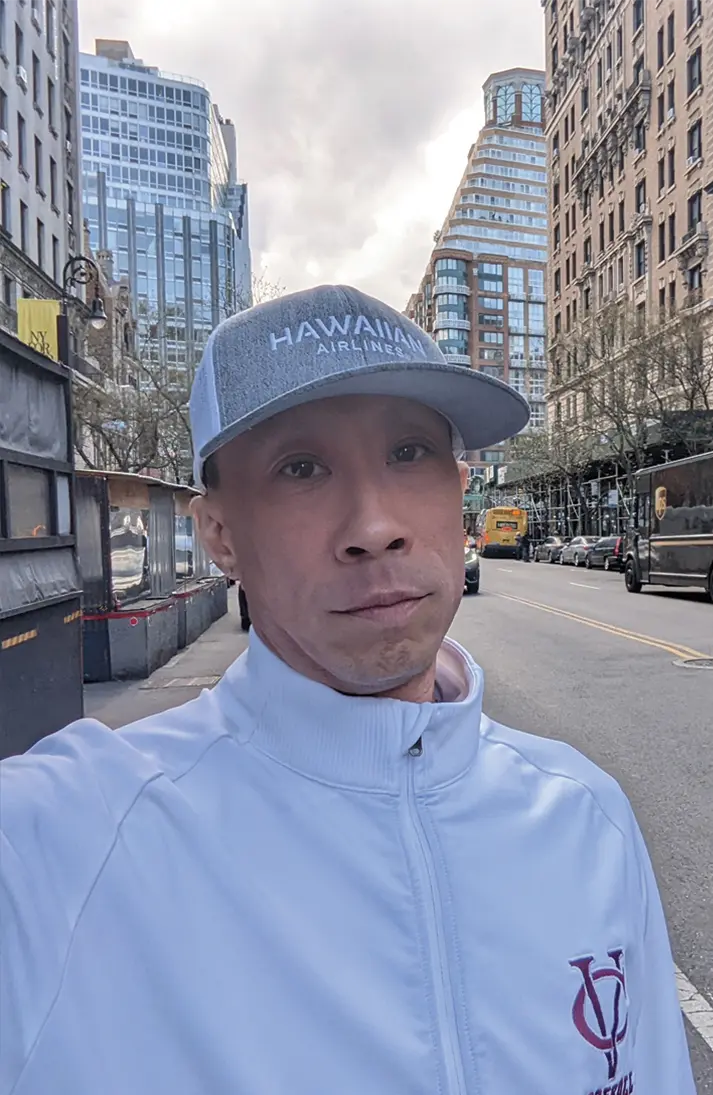
Courtesy of the subjects
Alums bring John Hersey’s Hiroshima to the Big Screen
John Hersey’s Hiroshima, an account of the experience of six hibakusha, or survivors of the blast, published in the August 31, 1946, issue of The New Yorker, was the first widely available document to tell Americans what really happened on the ground. The piece—which comprised the entire issue of the magazine—described not only the mass casualties that occurred, but the effect on individual civilians, many of whom were severely wounded or developed disabling, sometimes fatal, radiation sickness.
Hersey’s trip to the decimated city seven months after the bombing and the article that grew out of it is now the subject of a new independent feature film—currently in development—conceived by producer and visual artist Cannon Hersey ’99, John Hersey’s grandson. Joining him on the project, which is scheduled to begin shooting next June, are producer Donald Rosenfeld ’85, screenwriter Elisabeth Bentley, who attended Vassar as a freshman, and archivist/operations manager Jason Jhung ’98.
“Hiroshima has been called the best piece of journalism in the 20th century, one that would shape perceptions about nuclear proliferation for generations to come,” Cannon Hersey says. The piece made his grandfather, who had already distinguished himself as a war correspondent, a household name.
“He was a witness when everyone else was reluctant [to speak],” Rosenfeld adds. “And he told a bolder story than anyone [had] imagined.”

Courtesy of the subject
One challenge facing the filmmakers was Hersey’s approach to journalism and his personal reserve. He didn’t talk about his experience in Hiroshima with this family, and he gave very few interviews. “He chose to let the words on the page speak for themselves,” Cannon Hersey says.
Fortunately, John Hersey’s papers have been archived at the Beinecke Rare Book & Manuscript Library at Yale, providing the filmmakers with a trove of information. It was there that Bentley made a fortuitous discovery, a 230-page unpublished memoir by Reverend Kiyoshi Tanimoto, a Methodist minister and one of the hibakusha Hersey interviewed.
“While John Hersey wrote himself out of the story, Tanimoto describes his experience [vividly], what he thought, what he saw, and what he felt. He was a unique voice in Japan,” Bentley says. Her treatment focuses on the two weeks Hersey and Tanimoto spent together, using their relationship as a lens through which she tells the larger story.
Research has also offered new insight into the role of Hersey’s wife, Francis Ann Cannon, who was not only an intellectual partner to the journalist, but had family connections that helped pave the way for his entrée to Japan.
After the war ended, Tanimoto, already considered suspect by some Japanese for following a Western religion, was criticized by many for speaking out about the horrors he had witnessed. Hersey’s work, though widely acclaimed, was countered by those advancing the official government position: that the bombings were necessary to save additional lives.
Both Cannon Hersey and Rosenfeld view their project as a way of bringing global attention to the ongoing threat of nuclear warfare and the growing movement to end the proliferation of nuclear weapons. Building on their commitment to bringing an international perspective to the issue, the American team is partnering with a Japanese production company on the film.
“Oppenheimer told the first part of the story. We’re going to tell the next chapter,” Rosenfeld says, noting that the success of this past summer’s film about the building of the atomic bomb has created an audience that is ready to learn more.

Samuel Stuart Photography
“There’s a lot of material that still hasn’t been catalogued,” Jhung says. “My focus is on finding the best way to structure information and make it accessible.” He’s also looking forward to sharing media and resources with the Japanese team.
After writing Hiroshima, which was subsequently published as a bestselling book, John Hersey didn’t return to Japan for almost 40 years. In 1985, he added a chapter describing the fates of the six survivors. He would also write an essay about the internment of Japanese-Americans in Manzanar that accompanied a book of photographs taken by Ansel Adams.
“For the rest of his life my grandfather spoke out about racism, the right to vote, and the social issues of his time, including the Vietnam War,” Cannon Hersey says. John Hersey also continued publishing both nonfiction and novels and taught writing at the university level. As a teacher “he was committed to the next generation of storytellers,” says the grandson. “It was not just about his voice, but many voices.”